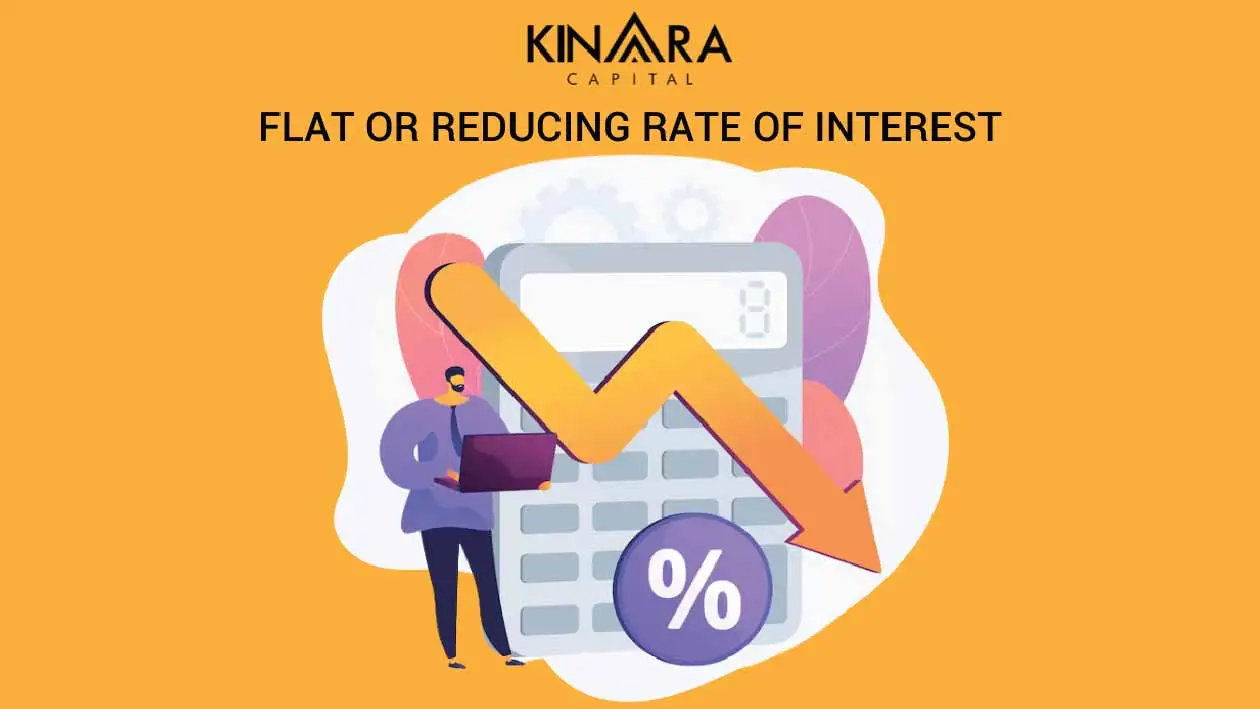
When it comes to securing a business loan, one of the most pivotal factors to evaluate is the interest rate. For entrepreneurs, business loan interest rates are often the linchpin influencing their choice of lender and the ultimate decision to proceed with a loan application. These interest rates play a pivotal role in shaping the equated monthly installments (EMIs), which become a mandatory financial commitment for your enterprise. Therefore, it is essential for business owners to gain a deep understanding of the applicable interest rates, their calculation methodologies, and the significant distinctions between flat interest rates and reducing rate of interest before embarking on the loan application journey.
For Micro, Small, and Medium-sized Enterprises (MSMEs), the decision between opting for a flat or reducing rate of interest is particularly critical due to their inherently delicate financial ecosystems. MSMEs often operate on slender profit margins and have limited financial resources. Therefore, the choice of interest rate structure significantly impacts their cash flow, sustainability, and ability to seize growth opportunities. Opting for the right interest rate structure can mean the difference between manageable EMIs that support steady operations and excessive financial strain that could hinder their growth prospects. Let’s explore how flat vs. reducing rate of interest works out for businesses.
Flat interest rates are a specific type of interest calculation that maintains a constant rate throughout the entire loan tenure. This means that the interest rate remains unchanged, even if the principal loan amount gradually diminishes over time. Typically, flat interest rates structures find application in loans such as car loans, mortgages, and other financial arrangements where borrowers commit to repaying the loan within a stipulated time frame.
Consider this scenario to understand how flat interest rates work: An MSME entrepreneur secures a loan of Rs. 100,000 with a flat interest rate of 10%. In this case, the annual interest amounts to Rs. 10,000. Consequently, the entrepreneur must make monthly payments comprising both principal and interest components. These monthly payments will start with relatively higher amounts in the initial years of the loan when the principal balance remains substantial. As time progresses and the principal amount decreases, the monthly payments gradually decrease as well.
While flat interest rates are relatively easier to comprehend and calculate, they tend to be more expensive compared to the reducing rate of interest. Despite their higher cost, flat interest rates may appeal to borrowers seeking predictability in their monthly obligations.
Reducing Rate of Interest, on the other hand, employs a method of interest calculation wherein the interest rate applied to the outstanding loan balance decreases as the loan matures. In this scenario, borrowers pay progressively less interest over the life of the loan as the interest component in each payment gradually diminishes.
Consider this example: If an MSME entrepreneur secures a loan with a reducing rate of interest of 6% and an initial principal balance of Rs. 1,00,000, the first monthly payment allocates Rs. 1,50 towards the principal and Rs. 1,00 towards interest. In the subsequent month, with a reduced principal balance of Rs. 98,500, the interest component decreases to Rs. 98.50. This pattern continues until the loan is completely repaid.
For borrowers seeking to make informed decisions, calculating EMIs for both flat interest rates and the reducing rate of interest can be empowering. Here’s how to do it:
Flat rate of interest formula: Interest on every installment = (Total loan amount * loan tenure * yearly interest rate) / total installments. For example, for a loan of Rs 2,00,000 with a fixed interest rate of 10% per annum for a 4-year tenure, the interest amounts to Rs 80,000 (2,00,000 * 4 * 10/100), resulting in a total repayment of Rs 2,80,000.
Reducing rate of interest Formula: Interest on every installment = outstanding loan amount * interest rate applied on every installment. For a loan of Rs 1 lakh at a variable interest rate of 10% per annum for a 5-year tenure, the reducing rate of interest results in progressively lower yearly payments as the outstanding balance reduces with each installment.
Choosing between a flat or reducing rate of interest depends on your financial needs. As already discussed above, flat rate offers predictable monthly payments, making budgeting easier, but can lead to higher overall interest costs. It’s straightforward but less flexible, especially if you repay early.
On the other hand, a reducing rate charges interest only on the outstanding loan amount, resulting in lower total interest paid over time and decreasing monthly payments as the principal reduces. This option can save you money in the long run, especially if you plan to repay early. Ultimately, consider your repayment capacity and financial goals before deciding.
Ultimately, the choice between flat interest rates and the reducing rate of interest hinges on individual circumstances and financial objectives. MSMEs contemplating a loan must diligently compare different interest rates and terms to identify the most suitable option for their business. Notably, various Non-Banking Financial Companies (NBFCs), including Kinara Capital, offer collateral-free business loans with reducing rate of interest Kinara Capital extends its support to entrepreneurs with offerings such as working capital loans, asset purchase financing, and specialized loans designed for women entrepreneurs, including the HerVikas program.
Also, we have a dedicated customer support team available between Monday – Friday (9.30 AM – 6.00 PM) at our toll free number 1800-103-2683 for any questions or assistance. This ensures that entrepreneurs can get the help they need throughout the loan process.
Reducing interest rates are generally better because they charge interest only on the outstanding amount, leading to lower overall costs, while flat rates offer predictable payments but higher total interest.
Yes, a reducing rate of interest is often better as it results in lower total interest payments over time, making it more cost-effective, especially for borrowers who repay early.
The effective interest rate is the true cost of borrowing, reflecting the total interest paid over a loan’s term, including fees and compounding, expressed as an annual percentage rate.
Reducing rate of interest is more transparent as there is clarity in interest calculation, avoidance of hidden costs and it make it easier to compare loans.
For long-term loans, a reducing interest rate is generally better, as it minimises overall interest costs and offers decreasing monthly payments, making repayment more manageable over time.
